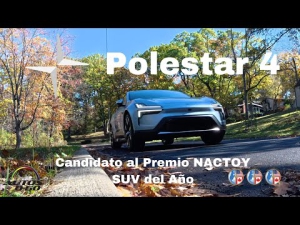“2026 Honda Prelude HYBRID Coupé – No CVT Transmission! .- Car of the Year candidate
This video was first publish on Javier Mota Youtube Chanel
https://www.youtube.com/v/2t2_vXVtUxw?version=3In this in-depth comparison we dive into the all-new 2026 Honda Prelude hybrid coupé and highlight one critical point: there is no CVT transmission whatsoever in this machine. Instead, Honda uses its two-motor hybrid system with a direct-drive / reduction gearbox layout, delivering driver engagement without the dreaded “rubber-band” feel of a CVT.
We then compare it head-to-head with two serious performance hybrid benchmarks:
The Porsche 911 Hybrid (Carrera GTS / T-Hybrid) – which pairs a 3.6-L flat-6, electric motor and an 8-speed dual-clutch gearbox to deliver ~532 hp and 449 lb-ft of torque.
The Chevrolet Corvette E‑Ray – America’s first hybrid supercar: 6.2-L V8 + electric motor + e-AWD = 655 hp and blistering 0-60 mph in ~2.5 s.
Key spec highlights for the 2026 Honda Prelude
2.0-litre four-cylinder engine paired with two electric motors: combined output ~200 hp & 232 lb-ft of torque.
Front-wheel drive layout.
No CVT / no traditional automatic or manual: instead Honda uses the hybrid system in “single-speed reduction” fashion, plus the new “Honda S+ Shift” mode which simulates gear shifts for more driver feel.
Fuel economy target: very efficient (~46/41 mpg city/highway) and designed to combine performance with daily usability.
Chassis hardware borrowed from the Civic Type R: dual-axis front strut, adaptive dampers, wider tracks – hardware aimed at driving engagement.
Why emphasise “No CVT”?
Many hybrid and economy-focused cars use a CVT because it maximises efficiency, but also tends to reduce driving feel (rubber-band effects, lack of shift feel). The new Prelude avoids the CVT entirely, choosing a hybrid direct-drive architecture + virtual shift simulation, which should appeal to driving enthusiasts who still want hybrid efficiency but don’t want a CVT’s quirks.
How it stacks up vs the competition:
Porsche 911 Hybrid: Premium, high output (~532 hp), rear (or all-wheel) drive, dual-clutch transmission – focused on performance at higher price tier.
Corvette E-Ray: Massive output (655 hp), e-AWD, track capability, also hybrid — focused squarely on supercar territory.
Honda Prelude: More accessible price-point (expected sub-$40K), hybrid efficiency, sporty hardware, emphasis on engagement without CVT – carving a unique niche between everyday coupe and enthusiast machine.
Don’t miss our segments covering:
How the Prelude’s “S+ Shift” works, and why Honda says it’s not a CVT though some articles still call it one.
Real-world driving feel: steering, handling, ride comfort given the Type R-derived chassis.
What you give up/gain: more modest output compared to Porsche/Corvette, but far better efficiency and lower cost.
The transmission discussion: what “no CVT” means here, how the hybrid reduction gear functions, how that differs from the rivals’ gearboxes.
Final verdict: who this car is for, where it fits in the market, and whether it hits the mark for enthusiasts who want hybrid but not mushy transmission feel.
🔔 Subscribe for more hybrid performance car comparisons, and hit the notification bell so you don’t miss our deep dives.
👍 If you enjoyed the video, please give it a like and leave a comment: Would you choose the Honda Prelude’s “no CVT” approach or go straight for the Porsche or Corvette hybrid monsters?






